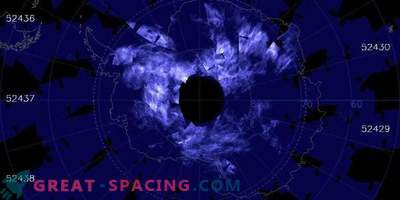
A NASA ballooning mission explored ripples — electric blue clouds found over the Earth's poles during the twilight of summer time.
NASA's air mission was able to observe the shining blue clouds pulsing on the edge of the earth's atmosphere. The main goal is to help find out how energy is transmitted through the layers of the atmosphere.
The phenomenon of silvery clouds or polar mesospheric clouds (PMC) is observed 80 km above the earth's poles during the summer immediately after sunset. Clouds are formed due to the fact that ice crystals grow on tiny meteoric fragments in the region of the earth's atmosphere (mesosphere). In July 2018, PMC Turbo’s NASA mission sent a balloon to study the phenomenon closely and obtain information about movement in the earth’s atmosphere. Sharie managed to collect 6 million high-resolution frames while moving across the Arctic for 5 days. The balloon was moving from Sweden to Canada. The waviness and flow of clouds reflect the movement of air in the upper atmosphere. The phenomenon is called atmospheric gravitational waves (not to be confused with gravitational waves from the collision of large space objects).
Gravitational waves - oscillations in the atmosphere that form as the air rises or falls and collides with obstacles. This can occur when atmospheric layers collide or when air flows through mountain ranges. Usually, atmospheric gravitational waves remain invisible, but they are fixed when they flow through noctilucent clouds.
Scientists also used a lidar system for the first measurement of the exact altitude of clouds and temperature fluctuations above and below the cloud line. By observing the flow of gravitational waves, researchers can better understand how turbulence works in the upper atmosphere.











































